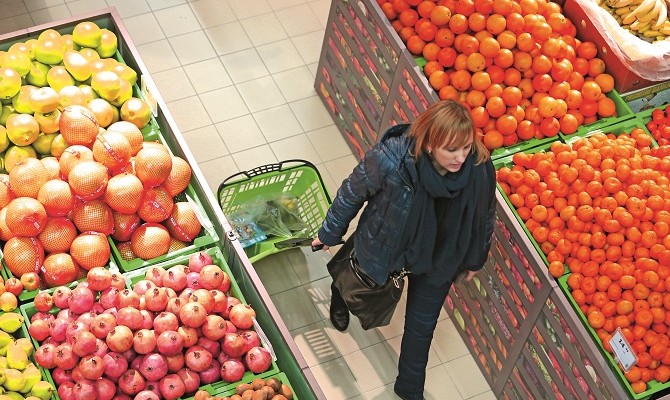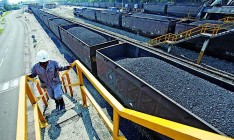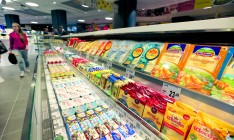Business
PricesProducers restraining price growth by a narrow margin

Ukrainian manufacturers, as well as importers, are not in a hurry to place the full burden of increased production costs on consumers. The prices of imported products in the hryvnia equivalent increased by the same amount as the value of the dollar increased against the hryvnia, which is 87% based on the exchange rate of dollars on the cash market at the end of November. Accordingly, the prices of imported raw materials and components increased for Ukrainian manufacturers. This was reflected in the final production cost of Ukrainian products, though consumer prices for Ukrainians grew over the last month of autumn by a mere 21.8%. This means that businesses are restraining price growth at the expense of their own profit margins.
Preserving sales volumes
Manufacturers of fuel, transport vehicles, pharmaceutical products and fruits were the first to start placing the burden of devaluation of the national currency on the shoulders of consumers. Fuel prices grew 56% in November compared to November 2013, prices of vehicles – also 56%, pharmaceutical products – 40% and fruits – 49%. Gradually, although less intensively, producers of foodstuffs, which are less dependent on imports, also transferred the exchange rate difference to the prices of certain products. Indeed, the prices of fish and seafood products grew by 30% and meats and meat products – 25%. Now, other producers are starting to revise their prices. For example, clothing and footwear was cheaper than a year ago in August, but in November their prices increased on average by 13%.
Noteworthy, even the prices of purely foreign-made products did not increase in accordance with the declining hryvnia exchange rate. For example, the prices of household appliances increased by a mere 23%. Both importers and domestic producers working with imported components are postponing an increase in prices fearing that this will deal a serious blow to domestic demand and are attempting to preserve their positions on the domestic market, says Head of the Analytical Department at SP Advisors Vitaliy Vavryshchuk.
Ukrainians, whose incomes are losing purchasing power due to inflation, have been vulnerable to price growth. According to the estimates of GfK Ukraine, in October the Index of Devaluationary Expectations reached 153.4 points, while the Index of Inflationary Expectations was 190.4 points on a 0 to 200 scale, where the indicator within the range of 100-200 points, reflects growing negative assessments. A year ago these indicators were 119.8 and 183.7 points respectively. The Index of Propensity to Consume dropped over the year from 88.9 to 60.7 points. As a result, the population curbed its consumer appetites. Over ten months retail trade turnover dropped 6.8% and retail sales of companies decreased by 7.9%.
A long and rocky road
In October, the consensus-forecast of Capital, which reflects expectations of leading international organizations, Ukrainian R&D centers and investment companies, promised a 19.5% growth of consumer prices in Ukraine in December 2014 compared to the same month in 2013. However, as it turns out those surveyed in the opinion poll were too optimistic. Prices grew by 19% already in October compared to December, while in November their growth rate increased to 21.2%. This means that by the New Year the consumer inflation will reach 22-23%, believes Executive Director of CASE Ukraine Dmytro Boyarchuk. Prices will not stop growing then. In the first half of next year certain inertia of price growth will remain and inflation will increase by 1-2 percentage points a month instead of 2-3 pp, as it was this past autumn, says Boyarchuk. In addition, a new wave of devaluation could lead to another escalation of prices.
In the more distant future, when the exchange rate stabilizes, price growth will be supported by attempts of producers to regain their level of profits before devaluation. “With sharp devaluation the importers cannot afford to fully transfer the burden of rate losses on to the consumers faster than in one year, which is why they are restraining price growth through the reduction of their own margin,” says Vavryshchuk. Ukrainian producers that use imported raw materials will also need six to nine months to return to the margin prior to devaluation.






 of the agreement of syndication with Financial Times Limited are strictly prohibited. Use of materials which refers to France-Presse, Reuters, Interfax-Ukraine, Ukrainian News, UNIAN agencies is strictly prohibited. Materials marked
of the agreement of syndication with Financial Times Limited are strictly prohibited. Use of materials which refers to France-Presse, Reuters, Interfax-Ukraine, Ukrainian News, UNIAN agencies is strictly prohibited. Materials marked  are published as advertisements.
are published as advertisements.